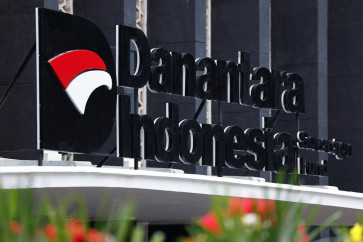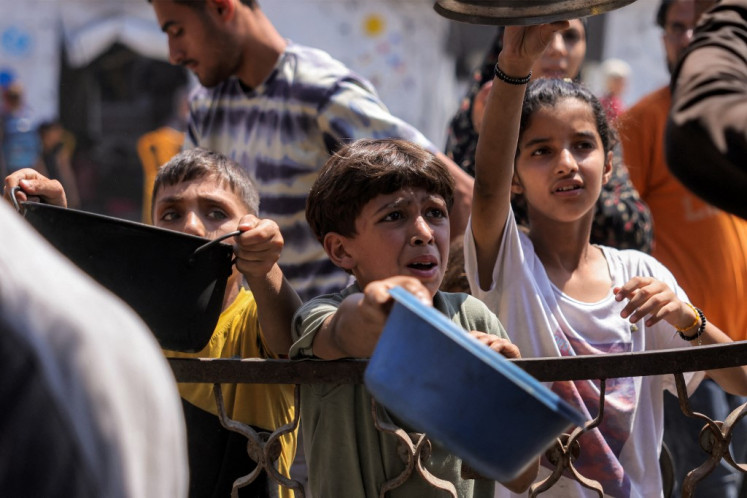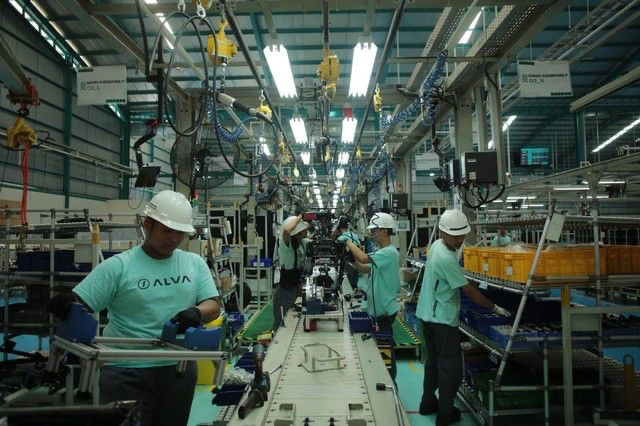Popular Reads
Top Results
Can't find what you're looking for?
View all search resultsPopular Reads
Top Results
Can't find what you're looking for?
View all search resultsAnalysis: Higher fuel prices: Short-term pain
ANTARA/Rosa PanggabeanThe government has come up with two options, planned for April 1, 2012, implementation, on the partial lifting of fuel subsidies to help relieve the budget deficit on higher global oil prices
Change text size
Gift Premium Articles
to Anyone
ANTARA/Rosa Panggabean
The government has come up with two options, planned for April 1, 2012, implementation, on the partial lifting of fuel subsidies to help relieve the budget deficit on higher global oil prices.
The first option is for the government to raise subsidized fuel prices by Rp 1,500 per liter on average. Second, the government limits the subsidy’s value to Rp 2,000 per liter, allowing subsidized fuel prices to move in line with market prices.
On the second option, the impact on inflation would be the maximum Rp 2,000 per liter, or a minimal of 8.5 percent inflation given that the current regular gasoline market price is currently at around Rp 8,500 per liter at the pump, compared to Rp 4,500 per liter subsidized oil price. On the flip side, we note that if the government were to raise subsidized fuel price by Rp 1,500 per liter, inflation would increase to 7.8 percent y-y from our base of 5.2 percent
(exhibit 1).
In our view, the government’s plan to partially eliminate fuel subsidy is a step in the right direction over the longer run, allowing for greater spending on health, education and infrastructure.
However, in the short term, the higher inflation that ensues will not only be counter intuitive but also counter productive to Bank Indonesia’s plan of lowering interest rates ahead to support our domestic economy.
To compensate people’s lower purchasing power eroded by inflation, the government also plans to provide additional funding worth Rp 40 trillion which would be channeled into four programs including cash aid, public transport subsidy, food subsidy and education subsidy for low-income families.
Based on our estimate, there are currently around 17 million low-income families that would be eligible for the government’s cash aid disbursements. Assuming two thirds of the Rp 40 trillion would be used for cash aid, each of the 17 million eligible families would receive Rp 200,000 per month for the government’s planned duration of eight months. Therefore, the remaining one third or Rp 13 trillion (i.e. Rp 100,000 per month) could be used for other subsidies (transport, food and education) to low-income families.
On the interest rate side, with inflation on the rise, we believe there is no more room to lower the central bank’s interest rates at least in the short term. Therefore, we advise investors to trim exposure in interest rate sensitive sectors: banks, auto and property. At this stage of the cycle, we reduce our Overweight ratings on the three above-mentioned sectors to NEUTRAL.
With higher inflation on the cards, investors can find shelter in energy related sectors (coal and gas), plantations, toll roads and selective consumer stocks. As we expect possible negative sentiment to linger on big cap Bank and Auto stocks, other big cap alternative investments could be found in Gudang Garam (GGRM), which has retreated more than 20 percent from its recent peak, United Tractors (UNTR) and Perusahaan Gas Negara (PGAS).
Note that we have raised target prices on UNTR due to recent acquisitions of two coal mines raising the long-term value of the company, and PGAS on higher volumes. For the coal sector, we continue to like Adaro Energy (ADRO) and Bukit Asam (PTBA) while for the planters, we prefer London Sumatra (LSIP) and BW Plantation (BWPT).
As a sector, we also like toll roads, which will benefit from higher inflation (i.e. toll tariff increases are 2x CPI), with Jasa Marga (JSMR) remaining as our top pick. On the consumer sector, we advise investors to either move up the chain to the higher end segment like Mitra Adiperkasa (MAPI), where purchasing power is stronger, or to the extreme defensive counters like Indofood Consumer Branded Products (ICBP) and Gudang Garam (GGRM), which offer defensive products. We believe lower end segment companies like RALS will be hurt most by higher fuel prices. Happy trading!
The writer is senior vice president/head of research at PT Bahana Securities












